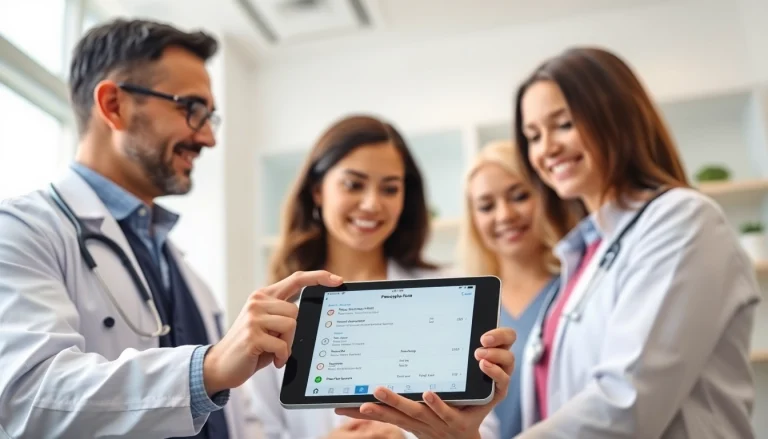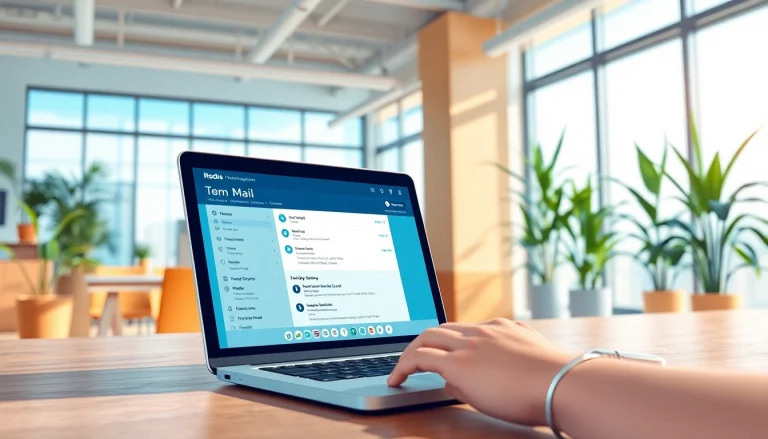Introduction to Electronic Prescribing
As the healthcare industry evolves, technology plays an increasingly vital role in enhancing the quality of patient care. One of the most transformative innovations in this sector is electronic prescribing, often referred to as e-prescribing. This digital solution streamlines the process of handling prescriptions, making it more efficient and secure. The benefits of electronic prescribing are profound, impacting healthcare providers and patients alike.
What is Electronic Prescribing?
Electronic prescribing is the electronic generation, transmission, and filling of a medical prescription. It eliminates the traditional method of handwritten prescriptions, substituting it with a system that allows healthcare providers to electronically send prescriptions directly to pharmacies from their practice management systems. This technology offers several advantages over traditional prescribing methods, including reduced errors and improved efficiency.
Historical Context and Evolution
The evolution of e-prescribing can be traced back to the early days of digital health records in the 1990s. Initially, e-prescribing systems focused on digitizing paper prescriptions but lacked integration with other healthcare systems. As healthcare providers began adopting electronic health records (EHRs), e-prescribing functionalities became increasingly sophisticated, incorporating decision-support tools that alert prescribers about drug interactions and patient allergies. Today, e-prescribing is a crucial component of modern healthcare solutions, enabling seamless communication among healthcare team members and enhancing patient safety.
Importance of the Benefits of Electronic Prescribing
The transition from paper-based to electronic prescriptions is not merely a technological upgrade; it represents a paradigm shift in how healthcare providers manage patient medications. The benefits of electronic prescribing include improved accuracy in prescriptions, enhanced workflow efficiency, and better patient outcomes. As the industry embraces value-based care, e-prescribing emerges as a pivotal tool for delivering high-quality, patient-centered healthcare.
Benefits of Electronic Prescribing for Healthcare Providers
Streamlining Workflow Efficiency
One of the primary advantages of e-prescribing is its ability to streamline workflows within healthcare practices. By enabling providers to electronically generate and send prescriptions, e-prescribing reduces the time spent on administrative tasks associated with traditional prescribing, such as faxing or hand-delivering prescriptions to pharmacies. This efficiency translates into more time for patient care and enhances the overall productivity of healthcare providers.
Moreover, e-prescribing systems often include features such as automatic refill requests and prescription tracking, further simplifying the process. Healthcare providers can access patients’ medication histories and monitor adherence to prescribed therapies more effectively, leading to improved treatment outcomes.
Reducing Medication Errors
Medication errors can have devastating consequences for patients, leading to adverse drug events, prolonged hospital stays, or even fatalities. E-prescribing significantly reduces the risk of these errors by eliminating common issues associated with handwritten prescriptions, such as illegible handwriting and transcription errors. By ensuring that prescriptions are legible, clear, and standardized, e-prescribing enhances the safety of medication management.
Additionally, many e-prescribing systems incorporate decision-support tools that provide alerts for potential drug interactions, allergies, or other contraindications, allowing prescribers to make informed decisions. This proactive approach to medication management not only safeguards patients but also reinforces the integrity of healthcare practices.
Enhancing Patient Safety and Communication
Effective communication between healthcare providers, patients, and pharmacists is crucial for ensuring patient safety. E-prescribing facilitates this communication by allowing for real-time updates on prescriptions and enabling secure messaging between providers and pharmacies. This transparency fosters a collaborative approach to care, where all stakeholders are informed about a patient’s medication regimen.
Furthermore, patients benefit from enhanced safety through features such as instant notifications of allergies and drug interactions, which e-prescribing systems typically provide. This technology empowers patients to be active participants in their healthcare, helping them understand their medications and avoid potential risks.
Benefits of Electronic Prescribing for Patients
Improved Access to Medications
One of the significant benefits of electronic prescribing for patients is improved access to medications. Traditional prescribing methods can introduce delays due to the time taken for prescriptions to be hand-delivered or faxed to pharmacies. With e-prescribing, prescriptions are sent directly to pharmacies electronically, often resulting in faster processing and reduced wait times for the patient. This swift access can be crucial, particularly in urgent situations where timely medication is needed.
Moreover, e-prescribing may enable patients to choose their preferred pharmacy, allowing for greater convenience and flexibility. Patients can also receive notifications when prescriptions are ready for pickup, which adds to a seamless healthcare experience.
Instant Notifications of Allergies and Interactions
With the integration of electronic prescribing systems, patients benefit from instant notifications regarding allergies and drug interactions. These systems alert prescribers during the prescribing process, ensuring that patients are not prescribed medications that could pose health risks due to existing allergies or potential interactions with other medications they are taking.
This feature enhances patient safety significantly and provides peace of mind for both patients and healthcare providers, knowing that precautions are in place to prevent adverse events.
Convenience of Prescription Management
E-prescribing increases the convenience of managing prescriptions for patients. Many e-prescribing platforms provide patient portals where individuals can view their medication lists, request refills, and communicate with their healthcare providers. This digital management system reduces the need for phone calls and visits to the healthcare provider for prescription-related inquiries, making it more straightforward for patients to stay on top of their medications.
Additionally, this convenience helps improve medication adherence. By simplifying the refill and tracking process, patients are more likely to take their medications as prescribed, contributing to better health outcomes overall.
Implementation Challenges and Solutions
Technological Barriers to Adoption
While the benefits of electronic prescribing are clear, the transition from traditional methods to e-prescribing does present challenges. One of the most significant barriers is technology. Not all healthcare providers have the resources or infrastructure necessary to implement e-prescribing systems effectively. Legacy systems may not be compatible with newer e-prescribing solutions, leading to potential disruptions in workflow.
To overcome these challenges, healthcare organizations should invest in modern EHR systems that include integrated e-prescribing functionalities. Collaboration with technology vendors can also provide financial and technical support for successful implementation, ensuring that practitioners can access the necessary tools without incurring prohibitive costs.
Training and Support for Healthcare Staff
Another common challenge is ensuring that healthcare providers and staff are adequately trained to use e-prescribing systems. Resistance to adopting new technologies can also stem from a lack of understanding about the benefits or concerns about operational changes. It is crucial for organizations to provide comprehensive training that not only addresses how to use e-prescribing tools but also highlights their role in enhancing patient safety and improving efficiency.
Ongoing support is essential, including refresher courses and access to helpdesk resources for troubleshooting potential issues. Ensuring that staff feel confident and competent in using e-prescribing at every stage is crucial for a successful implementation.
Overcoming Resistance to Change
Healthcare providers may initially resist adopting electronic prescribing due to uncertainty or skepticism about its effectiveness compared to traditional methods. Understanding this resistance is vital, as it can result from fear of the unknown or a perceived complexity of new technology.
Effective change management strategies can help overcome this barrier. Involving key stakeholders in the planning and implementation stages fosters a sense of ownership and can facilitate smoother transitions. Demonstrating improved outcomes and sharing success stories from early adopters can also help assuage fears and highlight the potential benefits of e-prescribing.
Future Trends in Electronic Prescribing
Advancements in E-Prescribing Technology
The future of e-prescribing looks promising, with ongoing advancements in technology leading to even more robust solutions. Innovations such as artificial intelligence and machine learning are being integrated into e-prescribing systems to enhance decision-support capabilities. These technologies can analyze patient data to provide personalized medication suggestions, improving the overall quality of care.
Additionally, the advent of mobile applications is making it easier for patients to manage their prescriptions on-the-go, facilitating communication with providers and pharmacies beyond traditional desktop environments.
Integration with Telehealth Services
The rise of telehealth, accelerated by recent global health events, has brought new dimensions to e-prescribing. As more patients opt for virtual consultations, e-prescribing systems are increasingly being integrated into telehealth platforms. This integration allows for seamless communication on prescriptions during telehealth appointments, enabling healthcare providers to prescribe medications instantly without the need for follow-up appointments.
This trend not only enhances patient convenience but also highlights the need for healthcare systems to adopt technologies that complement telehealth practices, ensuring holistic patient care in this evolving landscape.
Patient-Centric Innovations in Prescription Management
As patient preferences shift towards more personalized healthcare experiences, the future of e-prescribing will likely focus on innovations that prioritize patient engagement. This may include features such as customized medication reminders, digital health records that patients can access from their smartphones, and enhanced communication tools that foster dialogue between patients and healthcare providers.
Creating a more patient-centric approach, where patients feel more in control of their health journey and medication management, will be fundamental to the ongoing success of e-prescribing initiatives.
Conclusion
In conclusion, the transition to electronic prescribing represents a significant advancement in how prescriptions are managed within the healthcare system. The multitude of benefits, ranging from streamlining workflows and reducing medication errors to enhancing patient safety and communication, underscores the value of this technology.
As we move forward, addressing the implementation challenges and leveraging new technologies will be critical in realizing the full potential of e-prescribing. By embracing these changes, healthcare providers can foster an environment that prioritizes quality and efficiency, ultimately leading to improved patient care.

























+ There are no comments
Add yours